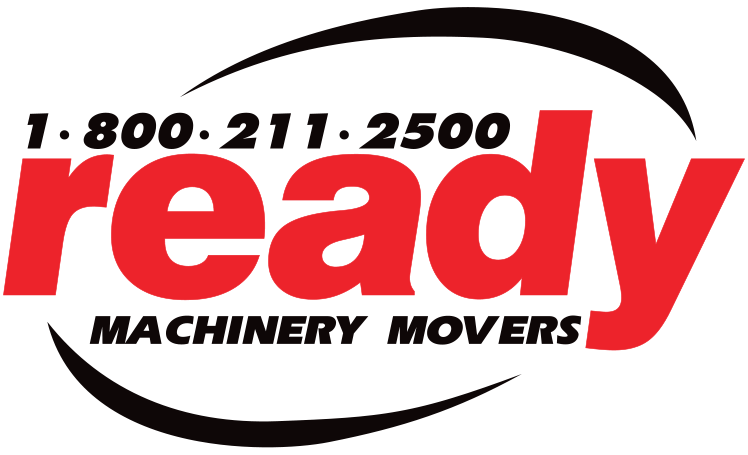Using heavy machinery and equipment can pose a variety of hazards for both operators and other employees. Workplace injuries are not uncommon, and some can be fatal. Injuries can and should be avoided at all costs. Ensure that workplace accidents are prevented by strictly implementing safety protocols when handling heavy equipment.
Keep your employees safe, prevent downtime, and circumvent incidents that can lead to personal injury claims.
Heavy Equipment Hazards that Cause Injuries
The most common dangers involving heavy equipment and machinery are:
- Struck-by incidents – Struck-by incidents occur when a person is hit by a vehicle or falling or flying objects that are dislodged from a piece of equipment.
- Caught-in or -between hazards – Caught-in or caught-between accidents happen when a person, their body part/s, or clothing is caught, crushed, or pinned between equipment and other objects. These types of incidents include getting pressed into a wall by a vehicle after impact or getting one’s finger/s stuck in a machine.
- Contact hazards – This refers to other dangers that involve cuts or lacerations from sharp objects, burns from hot machinery parts, or electric shocks.
Safety Measures to Prevent Heavy Equipment Injuries
Employers, supervisors, and workers alike share the responsibility of maintaining the safety of the workplace.
- Equipment Selection
To curtail any and all issues with regard to heavy equipment, employers must select reliable and well-designed machinery that poses minimal risks. They should ensure they can acquire comprehensive and relevant information on the equipment (including maintenance requirements and safe usage) from the manufacturer. In addition, the chosen device must have built-in safety controls that:
– prevent accidental power on
– allow for emergency power off
– have a fail-safe mechanism in case of a malfunction
– are visible and easy to operate

- Risk Assessment
In addition to stringent selection processes, equipment must be subject to risk assessment. Hazards that devices pose must be identified prior to installation or use. Taking this step allows employers to ascertain measures to minimize or eliminate dangers and to put these practices into place.
- Elimination of Hazards
Removing the hazard itself is an effective move; replace it with safer and more efficient equipment. If this is not possible, design work systems to minimize the use of such devices. If the machinery in question is an essential part of operations, take extra measures to reduce the risk.
- Equipment Guards
When elimination is not an option, equipment must be fitted with appropriate guards to prevent access to hazards like rotating parts and sparks. Machine guards will protect employees from potential injury. As a rule, guards must:
– hinder contact with dangerous parts
– be secure or tamper-proof
– present no additional hazards
– not disrupt machine operations

There are four main types of guards:
– Fixed – A permanently affixed part of the machine that acts as a barrier and is designed for durability and extended use.
– Interlocked – Shuts off power automatically when it is opened, removed, or tampered with.
– Adjustable – Offers both protection and flexibility, allowing the machine to function in a variety of applications.
– Self-adjusting – Automatically adjusts itself to admit objects of varying sizes without exposing the operator to dangerous parts.
- Education and Training
Ignorance can be costly, especially when dealing with the potential dangers of heavy machinery. Operators and employees who work around heavy equipment must be informed regarding the hazards it poses. Employers and/or supervisors can disseminate this information through training, safety notices, and/or warning signs.
– Operators must be trained and/or certified. Requirements may vary depending on the piece of equipment, but one thing is clear: use must be restricted to those who have been trained to handle it. Training can either be formal (like requiring a license) or offered by a superior or an experienced worker.
– Supervisors must conduct inspections or oversee the use of work equipment from time to time. The goal is to encourage vigilance when operating heavy machinery and to make sure that employees continue to follow the set safety protocols.

- Inspection, Testing, and Maintenance
Inspect work equipment (including parts, guards, and safety mechanisms) at least once every day, ideally before operations begin. Draw up a checklist for a thorough assessment to ensure that everything is in good working order and devoid of faults and/or damage. Staff must also be instructed to report any defects or malfunctions.
Faulty equipment needs to be flagged for repairs and testing. In addition, equipment must be stored properly and the required maintenance must be performed regularly to keep the device fit for use and to prolong its life.
- Work Environment
Before work begins, certain steps must be taken to guarantee everyone’s safety on the job site.
– Thoroughly inspect equipment to determine what is suitable for use and what might require maintenance or repairs. This is particularly important after machinery has been moved to and from a site.
– Ensure a sufficient amount of space to allow for proper use and/or maneuverability.
– Visibility on work sites is crucial. Provide adequate lighting to minimize blind spots.
– Floor space should be clear of trip and fall hazards.
– Overhead and underground hazards must be identified and addressed. Clearly mark obstructions and utilities (e.g. water, gas, and electrical lines) and remind workers to maintain a safe distance from power lines and other dangers. Set up barricades to prevent accidental falls into dugout holes or trenches.
- Safe Practices During Operations
– Follow the instructions and recommendations of manufacturers. These should be covered in training. Supervision must also be in place to ensure that safety precautions are reinforced.
– Wear seatbelts. Heavy equipment operators must wear a seatbelt at all times. It secures them to their seat when moving over uneven ground, keeping them from accidentally falling off the machine. Additionally, a properly worn seatbelt can potentially save a life.
– Check blind spots. Operators must identify blind spots and make sure that these are clear before or while moving heavy equipment.
– Employ a spotter. Certain machines may drastically limit vision. A spotter can direct operators to maneuver around the area safely. Spotters must stay at a respectable distance while remaining visible.
– Do not interfere with running equipment. Workers need to take responsibility for their own safety. They should stay clear of moving parts or machinery to keep from getting caught in or struck by it.
– Do not distract operators. Operators need to focus to properly run a machine. The same principle that governs the “no texting while driving” precaution applies here.

– Communicate. Use a two-way radio, hand signals (from a trained individual), or any other means of communication.
– Mount and dismount carefully. Maintain a three-point contact when getting on or off of your equipment or vehicle.
– Load and unload properly. Do so at designated areas or on level ground. Make sure that others keep their distance and the loading zones are clear. Have a spotter assist you when working in high traffic sites. Operators must also take into account load limits and be sure that items are secure when lifting them. Workers not handling any loading or unloading tasks must stay clear of loading areas at all times.
– Implement lock-out/tag-out (LOTO) protocols. LOTO protocols are designed to protect employees from unexpected start-up or sudden energization of machines during maintenance or repairs. Procedures should involve the use of warning signs, locks, and tags to prevent incidents.

- Personal Protective Equipment (PPE)
Workers must wear the required PPE when operating or working near heavy machinery. The type of PPE depends on the task and what kind of equipment is involved and must be appropriate for each. PPE must also be durable, give sufficient protection, and be a good fit. Examples of PPE are:
– hard hats
– safety goggles
– ear protectors
– high visibility vests
– gloves
– boots
Employees must avoid wearing loose clothing or accessories (like jewellery) that could get caught in machines and cause injury.
Safety is a priority at all levels of operations, including moving and storage. For professional staging services and storage of heavy machinery throughout Ontario, trust Ready Machinery Movers. Call us at 1(800) 211-2500.
